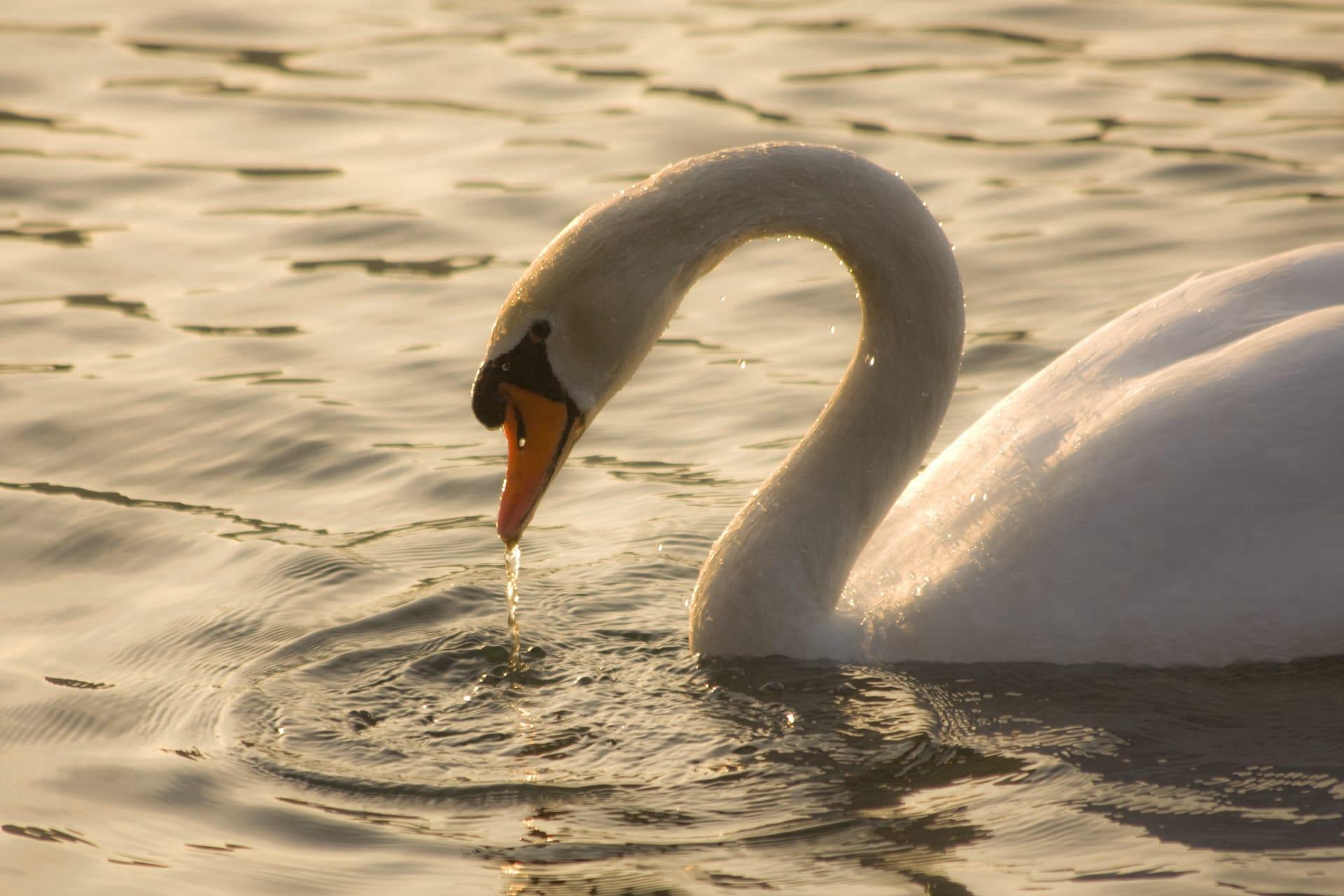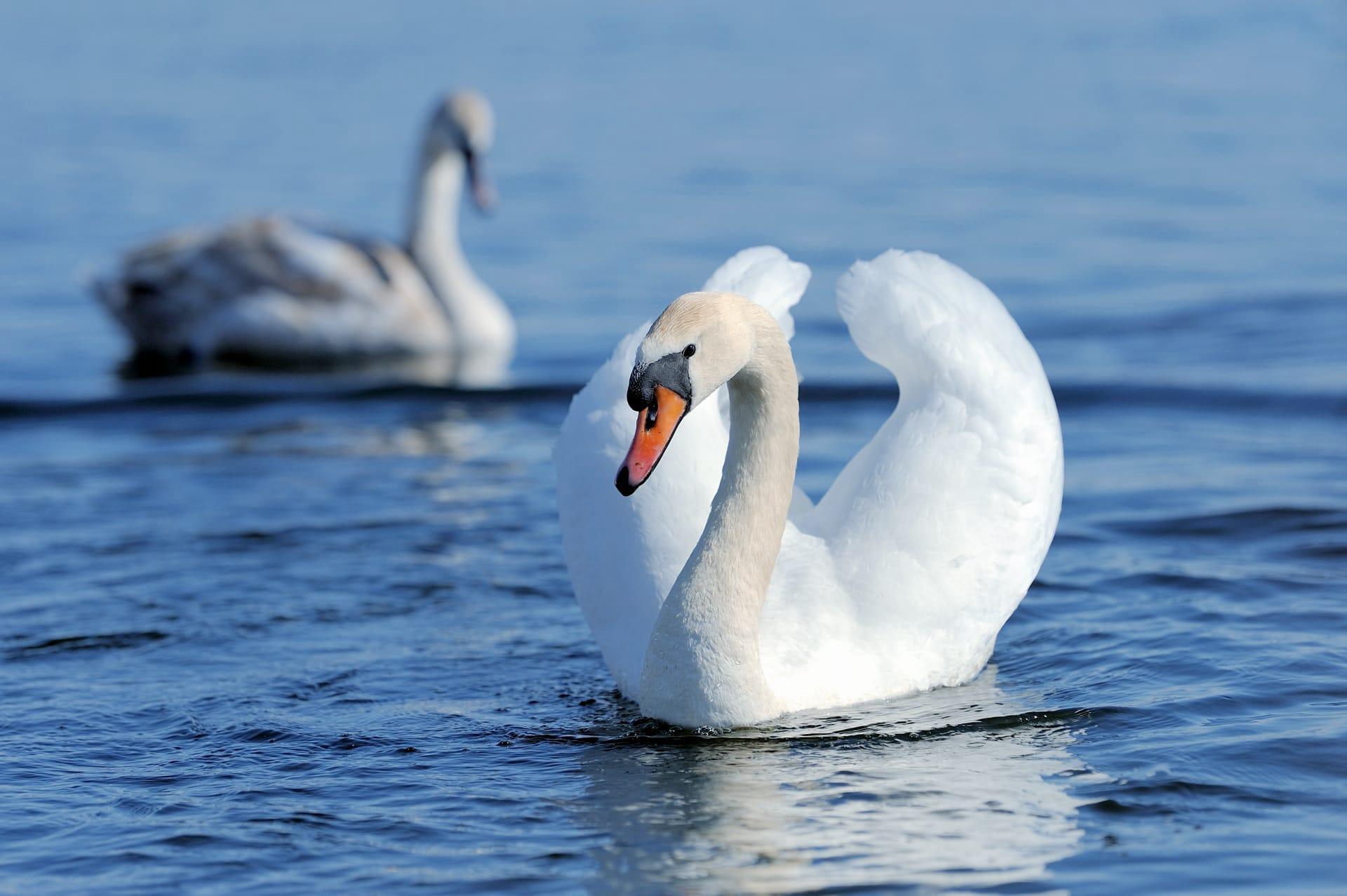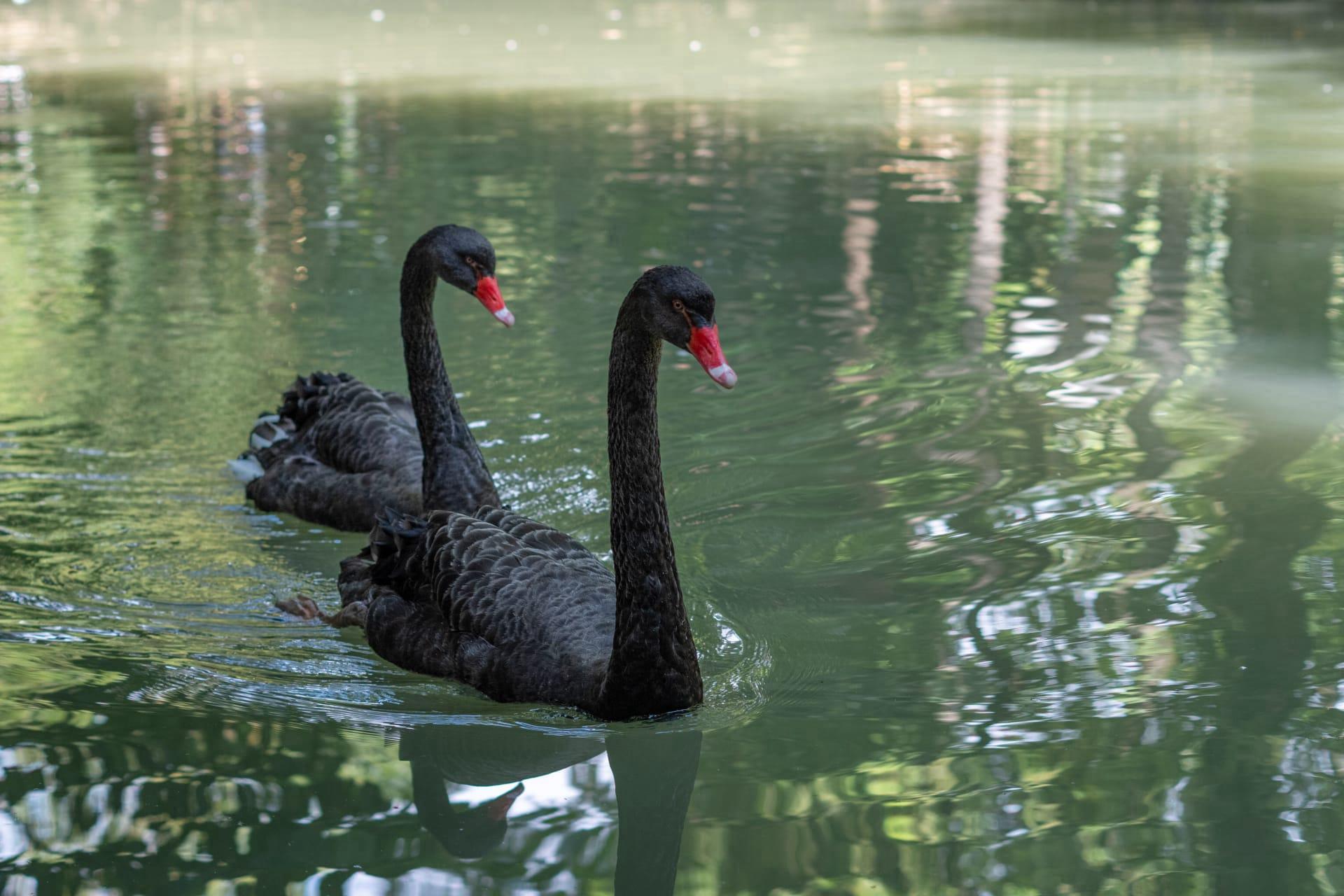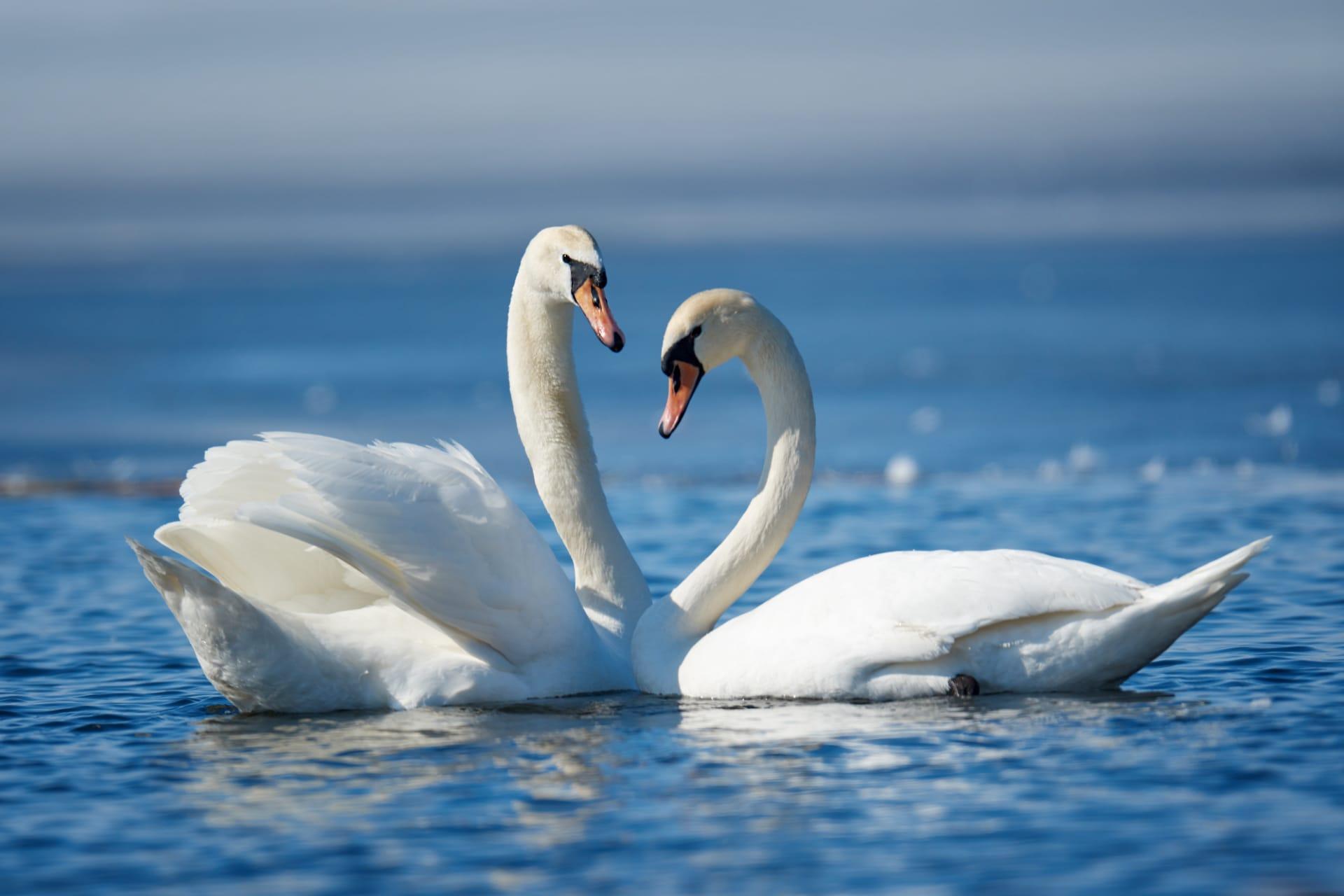1
Swans, renowned for their grace and beauty, are also remarkable for their long necks. A swan's neck can have up to 25 vertebrae, significantly more than the 7 found in humans. This extraordinary feature allows them greater flexibility and reach, essential for foraging underwater. Their necks can be almost as long as their bodies, making up nearly half of their total length, which can range up to 60 inches from beak to tail.
Another fascinating fact about swans is their flight ability. Despite their large size, with some species weighing over 30 pounds and having a wingspan of up to 10 feet, swans are powerful fliers. They can travel at speeds of up to 60 miles per hour and cover hundreds of miles during migration. Their wings produce a unique singing sound in flight, which is why a group in flight is sometimes called a "whistling" swan.

2
Swans are known for their lifelong monogamous relationships. Once they find a mate, they typically stay together for life. This strong bond is not just romantic folklore; it has practical reasons. Swans require cooperative partnership for nesting and raising their young. Breeding pairs synchronize their movements and often perform mutual preening and other affectionate behaviors.
Interestingly, swans are among the few birds capable of recognizing themselves in a mirror. This self-recognition indicates a high level of cognitive abilities. Such intelligence is not common in birds, with this trait being mostly observed in highly intelligent animals like primates and dolphins.

3
Swans are highly territorial animals, especially during breeding season. They use a variety of aggressive postures and loud hisses to ward off intruders. A swan’s wings are strong enough to break a human's arm, although such extreme aggression is rare. The territorial behavior is crucial for protecting their nests and young ones from potential threats.
The diet of swans is quite diverse. While they are often seen dipping their heads underwater to feed on aquatic plants, they also eat small fish, frogs, and insects. Swans can consume up to 8 pounds of food per day. Interestingly, they have a serrated bill that helps them filter water and retain food, acting like a built-in sieve.

4
Swan feathers play a crucial role in their survival. Apart from their beauty, these feathers are highly waterproof, thanks to a special oil produced by a gland near their tails. Swans are often seen preening, which involves spreading this oil over their feathers to maintain their waterproofing. This oil also helps in regulating their body temperature, crucial for survival in cold waters.
Swans are also known for their impressive memory. They can remember people who have been kind to them or harmful. This memory helps them avoid danger and seek out safe environments. Their ability to recognize individual humans is a testament to their intelligence and adaptability in various environments.

5
Swans have a unique way of sleeping. They can sleep on land or water, and often do so with one leg tucked under their body. When sleeping on water, they have an ability to keep one eye open and half of their brain awake. This adaptation, known as unihemispheric slow-wave sleep, helps them remain alert to potential threats while resting.
Lastly, the color of a swan is determined by its genetics and diet. The most common colors are white and black, but some species exhibit a mixture of both. The black swan, native to Australia, is unique for its mostly black plumage and bright red beak. Diet can influence the shade of their feathers; for instance, a diet rich in certain algae can give swans a temporary pink hue.